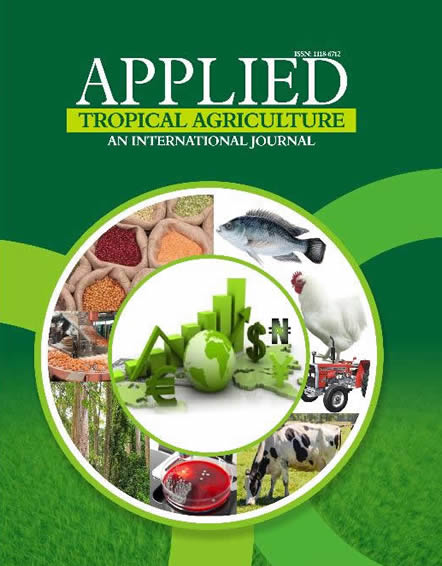The biological treatment of cassava peels was done using Aspergillus flavus, Aspergillus funmigatus, Rhizopus stolonifer,
Mucor mucedo and Penicillium notatum bringing about a decrease in the cyanide and an increase in the protein
contents with peels fermented with the fungi Rhizopus stolonifer having best fermentative ability. The cyanide content
decreased from 43.94 mg/kg to 10.85 mg/kg while protein content increased from 7.96% to 22.28%. There was also
an increase in the percentage dry matter and ash contents of the fermented cassava peels when compared with the
unfermented while a significant decrease in the carbohydrate, fat and fibre contents was observed. These findings
showed that the nutritional composition of cassava peels characterized by high cyanide content, high carbohydrate
content coupled with low protein and ash contents, improved when treated biologically with fungal isolates resulting
in decrease in cyanide, carbohydrate and fat contents and increase in protein, dry matter and ash contents. The
biological treatment of cassava peels with fungal isolates could be a good source of protein in livestock feeds and
subsequent improvement in its nutritional quality.
PAPER TITLE :BIOTRANSFORMATION OF CASSAVA WASTE BY FUNGAL FERMENTATION
APPLIED TROPICAL AGRICULTURE | VOLUME 15 NUMBER 1 2010
Paper Details
- Author(s) : B. J. AKINYELE
- Abstract:


